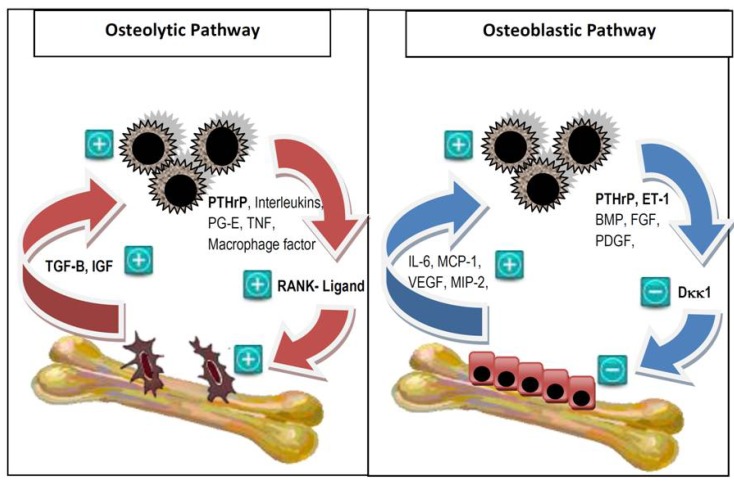Figure 1.
The vicious cycle of bone metastases. In the osteolytic vicious cycle, tumor cells secrete parathyroid hormone-related peptide (PTHrP) and other factors including interleukins, prostaglandin E, tumor necrosis factor and macrophage-stimulating factor. PTHrP induces osteoclastogenesis by upregulation of RANK-L. The activated osteoclasts in turn produce TGF-β and IGF, which promotes cancer cell growth. In the osteoblastic vicious cycle, breast cancer cells produce osteoblast-stimulating factors such as bone morphogenic protein (BMP), fibroblast growth factor (FGF) and platelet-derived growth factor (PDGF). PTHrP is also overexpressed. It activates ET-1, which down regulates Dkk1, a negative regulator of osteoblastogenesis. The activated osteoblasts in turn produce factors including interleukin-6 (IL-6), monocyte chemotactic protein-1 (MCP-1), vascular endothelial growth factor (VEGF), macrophage inflammatory protein-2 (MIP-2); which facilitate breast cancer cell colonization and survival upon arrival in the bone microenvironment. In reality, there is a complex interplay between the two cycles [11,19,20,21]. Reproduced with permission from the Journal of Breast Cancer: Targets and Therapy [18].

